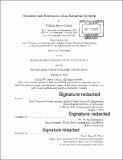| dc.contributor.advisor | W. Rockwell Geyer. | en_US |
| dc.contributor.author | Corlett, William Bryce. | en_US |
| dc.contributor.other | Joint Program in Oceanography/Applied Ocean Science and Engineering. | en_US |
| dc.contributor.other | Massachusetts Institute of Technology. Department of Earth, Atmospheric, and Planetary Sciences. | en_US |
| dc.contributor.other | Woods Hole Oceanographic Institution. | en_US |
| dc.date.accessioned | 2020-02-10T21:39:43Z | |
| dc.date.available | 2020-02-10T21:39:43Z | |
| dc.date.copyright | 2019 | en_US |
| dc.date.issued | 2019 | en_US |
| dc.identifier.uri | https://hdl.handle.net/1721.1/123735 | |
| dc.description | Thesis: Ph. D., Joint Program in Oceanography/Applied Ocean Science and Engineering (Massachusetts Institute of Technology, Department of Earth, Atmospheric, and Planetary Sciences; and the Woods Hole Oceanographic Institution), 2019 | en_US |
| dc.description | Cataloged from PDF version of thesis. | en_US |
| dc.description | Includes bibliographical references (pages 115-125). | en_US |
| dc.description.abstract | This thesis addresses the dynamics of estuarine networks, based on hydrographic observations in Newark Bay, a sub-estuarine network connected to the Hudson River estuary through New York Harbor. Estuarine networks differ from simple estuaries in that they may have multiple connections to the ocean, multiple freshwater sources, and often contain complex junctions between estuarine segments. The Newark Bay estuarine network is connected to the sea through two tidal straits, and is fed by multiple internal and external sources of fresh water. The estuarine network is also naturally divided into a series of reaches, each of which is characterized by a different cross-sectional geometry. This thesis focuses on the hydrographic variability and varying exchange flow within the Newark Bay estuarine network. Shipboard hydrographic measurements reveal the time-dependent formation of salinity fronts between reaches of the estuary. | en_US |
| dc.description.abstract | Each front is generated by a different mechanism; however, all are generated by tidal flow through channel junctions during ebb tide, and are advected landward during flood tide. Mooring-based measurements confirm that these fronts form during nearly every tidal cycle, and that the fronts are associated with substantial changes in local salinity on tidal timescales. The effect of tidal processes, such as frontal advection, on the exchange flow is investigated by applying the isohaline total exchange flow (TEF) framework to mooring-based observations in multiple reaches of the estuarine network. This reveals that over half of the exchange flow is driven by tidal processes at all sites within the estuary. Both the TEF-based salt balance and the standard Eulerian salt balance indicate that tidal processes are also responsible for at least half of the landward salt flux at most sites within the estuary; TEF and Eulerian salt balances are nearly identical. | en_US |
| dc.description.abstract | Tidal processes within the estuary are in large part associated with fronts. The large influence of tidal processes on the exchange flow in Newark Bay is thus likely due to the prevalence of channel junctions within the estuarine network. | en_US |
| dc.description.statementofresponsibility | by William Bryce Corlett. | en_US |
| dc.format.extent | 125 pages | en_US |
| dc.language.iso | eng | en_US |
| dc.publisher | Massachusetts Institute of Technology | en_US |
| dc.rights | MIT theses are protected by copyright. They may be viewed, downloaded, or printed from this source but further reproduction or distribution in any format is prohibited without written permission. | en_US |
| dc.rights.uri | http://dspace.mit.edu/handle/1721.1/7582 | en_US |
| dc.subject | Joint Program in Oceanography/Applied Ocean Science and Engineering. | en_US |
| dc.subject | Earth, Atmospheric, and Planetary Sciences. | en_US |
| dc.subject | Woods Hole Oceanographic Institution. | en_US |
| dc.subject.lcsh | Oceanography. | en_US |
| dc.subject.lcsh | Marine sciences. | en_US |
| dc.title | Dynamics and kinematics of an estuarine network | en_US |
| dc.type | Thesis | en_US |
| dc.description.degree | Ph. D. | en_US |
| dc.contributor.department | Joint Program in Oceanography/Applied Ocean Science and Engineering | en_US |
| dc.contributor.department | Massachusetts Institute of Technology. Department of Earth, Atmospheric, and Planetary Sciences | en_US |
| dc.contributor.department | Woods Hole Oceanographic Institution | en_US |
| dc.identifier.oclc | 1138877306 | en_US |
| dc.description.collection | Ph.D. Joint Program in Oceanography/Applied Ocean Science and Engineering (Massachusetts Institute of Technology, Department of Earth, Atmospheric, and Planetary Sciences; and the Woods Hole Oceanographic Institution) | en_US |
| dspace.imported | 2020-02-10T21:39:39Z | en_US |
| mit.thesis.degree | Doctoral | en_US |
| mit.thesis.department | EAPS | en_US |
